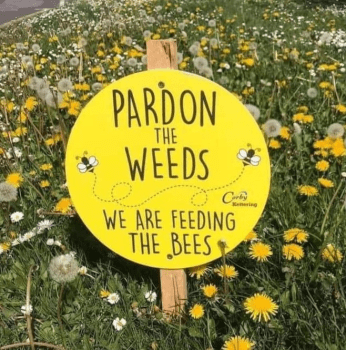Our mission often obligates us to tell our readers about problems that we see with local “restoration” projects in the San Francisco Bay Area, so when we see an opportunity to tell a positive story, we like to take it. The New York Times recently published an article about the American Prairie Reserve that we think is probably a good example. We say “probably” because this is a project in northern Montana that we won’t be able to visit and we don’t have first-hand access to the supporters or the critics of the project, so we have to admit that we could be wrong.

The non-profit organization that operates the American Prairie Reserve is a group of conservationists who are funded by millionaire city-slickers who would like to see a hefty slice of the American prairie preserved, along with the wildlife that roamed free there when Lewis and Clark passed through in the early 1800s. Their goal is to preserve 3 million acres of land. So far, they have stitched together federal grazing leases on 215,000 acres of federal land and purchased 58,000 acres of former ranches. They have removed 37 miles of fence and introduced 275 bison, a small start on what they hope will eventually be a huge herd. They have planted native grasses.

Their project is described in detail on their website which we encourage you to visit to see stunning photos of this beautiful land and its rare inhabitants. We can’t share their photos with you because they are not in the public domain.
Here’s what appeals to us about this project:
- Public access to the land is encouraged. Hiking, hunting, and camping are allowed.
- The project describes planting, not eradicating existing plants. As we say repeatedly on Million Trees, we encourage native plant advocates to plant whatever they wish. We ask only that they quit destroying everything else.
- The project describes introducing new animals, rather than exterminating existing animals.
- The project is being paid for by the people who support the project. Taxpayers are not being asked to fund someone else’s hobby.
The caveats
Unfortunately, the ranchers in the neighborhood are worried that this project threatens their way of life. Some of them have indicated that they will not sell their land to the project. They are concerned that the loss of ranch properties will slowly diminish their community. They worry that wealthy outsiders could price their families out of the market. They don’t want their agricultural community transformed into a pricey tourist destination that would radically alter the character of their community.
The ranchers also consider themselves good stewards of the land: “They rotate their herds to encourage a healthy mix of prairie grass and set aside ample room for sage grouse, plovers and heron. They are trying to till less ground, which can destroy an underground ecosystem. Some even allow small colonies of prairie dogs, which many farmers exterminate as pests.” (1)
The conservationists who are supporting the project say they are trying their best to be good neighbors. They buy land only when it goes on the market and then only at market-rate prices. They installed electric fences so the bison do not disturb their neighbors. They have even leased back some of the land they purchased to be grazed by ranchers.
The bottom line: Is conflict inevitable?
The American Prairie Reserve looks as though it has everything going for it, including a remote location with a very low population of fewer than 5,000. Yet, even when private money is used and every effort is made to accommodate those who live there, the project is controversial. So, we should not be surprised that the “restoration” projects in the Bay Area are controversial:
- Our projects ask the public to pay for projects that they often do not support.
- Our projects often restrict the public’s access to the land that theoretically belongs to them.
- Our projects eradicate plants and exterminate animals.
- We live in a densely populated, urban environment where every acre of public space is precious.
*********************************

I was surprised to read that taxpayers are not being burdened. I too like that animals are added, not removed, additionally, they keep the bison grazing on the preserved land. It would be a shame to have them shot like what happens to wolves.
Good points! I do not want to be taxed for practices I do not support nor do I support hunting or otherwise removing animals. The cutting down of healthy trees in the name of “improving” parklands needs to be stopped and the people involved defunded and fined.
It seems the fears of the ranchers are largely based on fear of “outsiders” and the changing of “their way of life”. They also view themselves as good stewards despite the miles and miles of fencing and extermination of prairie dogs. The truth is the small American rancher has been dying for quite some time now and ranchers should be thanking places like APR for giving them a way to get out.